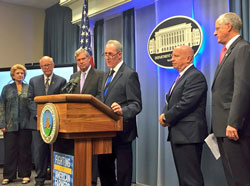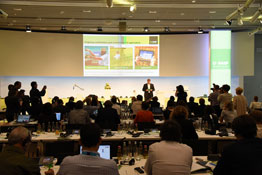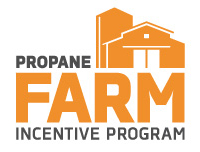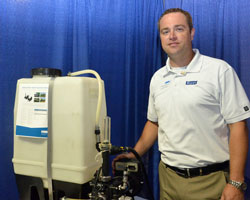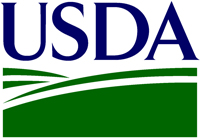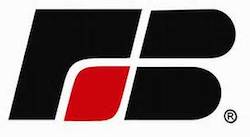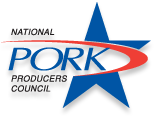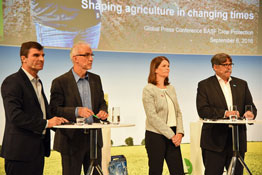 BASF’s Crop Protection business continues to grow and the company is working to provide even more innovation and technology for farmers to keep doing the biggest job on Earth.
BASF’s Crop Protection business continues to grow and the company is working to provide even more innovation and technology for farmers to keep doing the biggest job on Earth.
That’s the message that representatives of BASF gave during a global press conference last week in Germany. Speakers included (LtoR) Vincent Gros, Head of Europe, Africa and Middle East; Dr. Harald Schwager, Member of the Board of Executive Directors of BASF SE; Lena Adam, Head of Global Sustainability and Product Stewardship; and President Markus Heldt.
Dr. Schwager noted that BASF’s crop protection business sales have increased 75 percent over the past decade. “This outstanding performance shows that we deliver on our promises,” he said. “This confirms the importance of the Crop Protection division and its contributions to the BASF Group.”
For the remainder of 2016, BASF expects the agricultural market to remain volatile and the business environment to be challenging. Based on current developments, the financial goal for the Crop Protection division in 2016 is to strive for the same profitability level it reached in 2015. “Our sales force will be close to our customers. We will intensify our sales efforts, supported by the launch of new products and formulations,” said Schwager. “Changes lead to new opportunities for business growth and differentiation. We can look back with pride on BASF’s 100-year legacy of accomplishments in bringing breakthrough solutions for farmers to the market. Even more important is to look forward and to be part of an industry-leading team that helps shape and improve the future of modern agriculture,” concluded Schwager.
Listen to all of Harald’s remarks here: BASF Board of Executive Directors Member Harald Schwager
Gros and Adam discussed BASF’s stewardship efforts, what drives farmers, and how to meet their needs in a changing landscape. Listen to their remarks here. Vincent Gros and Lena Adam, BASF

